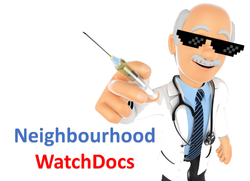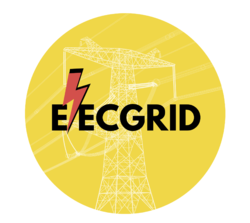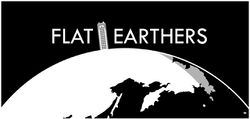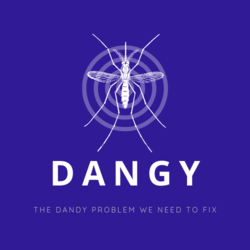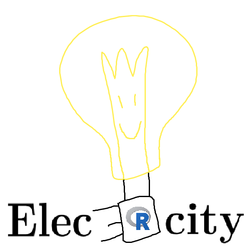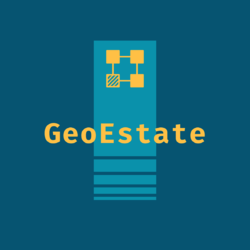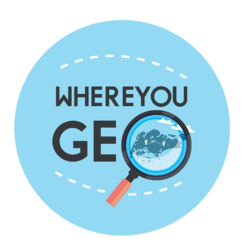Difference between revisions of "Project Groups"
| (33 intermediate revisions by 9 users not shown) | |||
| Line 75: | Line 75: | ||
<b><center>Modelling Tools for HDB Resale Prices</center></b> | <b><center>Modelling Tools for HDB Resale Prices</center></b> | ||
|| | || | ||
| − | In Singapore, the large majority of the population live in HDB flats. Given the scarcity of land in Singapore, housing prices tend to hold a large price tag as with HDB flats. | + | In Singapore, the large majority of the population live in HDB flats. Given the scarcity of land in Singapore, housing prices tend to hold a large price tag as with HDB flats. HDB prices could be affected due to various internal and external factors. While there may be several factors that are glaringly apparent, it may not be clear as to which factors have a higher weight in affecting the prices. |
| − | As | + | As such, our group will embark on creating a user-friendly dashboard for real estate analysts who may be less equipped with the technical or coding know-how. |
|| | || | ||
| Line 89: | Line 89: | ||
|- | |- | ||
| − | |[[File: | + | |[[File:BuSINESS_MAFIA1.png|center|link=Business Mafia Proposal|225px]] |
|| | || | ||
| − | <center><strong> | + | <center><strong>Too high, too low or just right?</strong></br> |
| + | A deep dive into Airbnb's datasets on Downtown Seattle to understand the spatial relationships between location of listings and key places to help hosts better manage their Airbnb business!</center> | ||
|| | || | ||
| − | Airbnb has been democratic in providing its data access to the public for potential analysis. However, there is a lack of an aggregated platform to distill this mass of data into information that allow Airbnb hosts better understand the demands of the | + | Airbnb has been democratic in providing its data access to the public for potential analysis. However, there is a lack of an aggregated platform to distill this mass of data into information that allow Airbnb hosts to better understand the demands of the travellers coming into their city. The reasons for visiting and type of travellers attracted also differ; as certain cities may attract more business travelers seeking comfort, while others attract backpackers looking for an affordable bed and breakfast accommodation. |
| − | + | Our team is delving into the landscape of Downtown Seattle in Washington, United States to understand the spatial relationship between key places and listing locations, and how it affects each listing’s price. Using Geographical Accessibility technique as a data exploration tool to help us better understand the overall accessibility of each listing to the key locations, we hypothesized that listings with higher accessibility scores should fetch higher prices. We then used Spatial Point Pattern Analysis to understand the distribution patterns, density and clustering of listings within various areas found in Downtown Seattle. Lastly, we built a Geographically Weighted Regression model that suggests to hosts listing prices based off their listing's location, distance to different areas within Downtown Seattle and the type of accommodations they are providing. | |
| + | |||
| + | We want to make this analysis easily available, customisable and understood by all end users. Thus, we included a RShiny Application that allows the user to input different listing parameters into our application. Users can see how the listing matches up with other listings of similar type, compare listing prices and analyse the distribution of these listings across Downtown Seattle. | ||
| + | Through this project, we hope to provide an alternative perspective on setting listing prices. Existing literature and methodology on pricing models commonly focus on the reviews and scores given by previous guests, or the interior design and amenities provided for in each apartment. Little thought is given to the overall accessibility of the apartment to all places that a guest will be travelling to for during their duration of stay. Thus, we hope that our RShiny application will be of valuable contribution to this growing space! | ||
|| | || | ||
| − | * [[ | + | * [[Business Mafia_Proposal|Project Details]] |
| − | * [[ | + | * [[Business Mafia_Poster|Project Poster]] |
| − | * [[ | + | * [[Business Mafia_Project_Application|Project Application]] |
| − | * [[ | + | * [[Business Mafia_Research_Paper|Research Paper]] |
|| Group Member: Cheng Xin Yuan, Fu Weiyu Chloe, Lim Jia Khee<br> | || Group Member: Cheng Xin Yuan, Fu Weiyu Chloe, Lim Jia Khee<br> | ||
|| | || | ||
|- | |- | ||
| − | |||
| − | |||
| − | |||
| − | |||
| − | |||
| − | |||
| − | |||
| − | |||
| − | |||
| − | |||
| − | |||
| − | |||
| − | |||
| − | |||
| − | |||
| − | |||
| − | |||
| − | |||
| − | |||
| − | |||
| − | |||
| − | |||
| − | |||
| − | |||
| − | |||
| − | |||
| − | |||
| − | |||
| − | |||
|[[File:DANGY LOGO FULL.png|center|link=Dangy|250px]] | |[[File:DANGY LOGO FULL.png|center|link=Dangy|250px]] | ||
| Line 139: | Line 114: | ||
Supporting the study of Dengue Fever outbreak through the development of spatial analytical tools for Taiwan | Supporting the study of Dengue Fever outbreak through the development of spatial analytical tools for Taiwan | ||
|| | || | ||
| − | This project | + | This project will develop an exploratory solution that supports the study of how dengue fever spread. The tool will also offer historical data of various types, like patient demographics, for users to refer to as they study the spatial temporal patterns of how the disease spreads. Through this, the tool will empower users to analyse the disease quickly and offer insight for authorities to take appropriate measure to prevent the breeding of dengue. For our project, we will be build our tool specifically for Taiwan. This is because data for dengue fever in Taiwan is readily available for analysis. Also, considering how Taiwan has a good mix of different settlements and terrains, it is a good region for us to build our application upon. |
| + | |||
| + | Using the developed tool, the project will also provide an analysis offering an intuition of how dengue fever spread across Taiwan. Through identifying and studying the transmission patterns of dengue over time, this project will help us better understand patterns and discover strategies on how to curb with epidemics in future & steps to prevent Dengue in Taiwan and similar states. | ||
| − | |||
| − | |||
|| | || | ||
* [[Dangy_Proposal|Project Details]] | * [[Dangy_Proposal|Project Details]] | ||
| Line 169: | Line 144: | ||
|| | || | ||
|- | |- | ||
| − | + | |[[File:GeoEstate_logo.png|center|link=GeoEstate|250px]] | |
| − | + | <b><center>[[GeoEstate|GeoEstate]]</center></b> | |
|| | || | ||
| − | + | <b><center>GWR Modelling for Landed Property Pricing</center><b/> | |
|| | || | ||
| − | + | How do you know if you are getting a reasonable price for your apartment? Due to vested interests, for people who are interested in being educated consumers, taking your Real Estate Agent's word for the price of a property may not be enough. In our current age, websites like PropertyGuru appear to give us some semblance of what prices are competitive. However, this may be misleading as it only is a snapshot in time. | |
| − | + | ||
| + | What if you were able to predict the price of the property you want to sell, or conversely, the dream property you wish to purchase, using masses of data accumulated over past years? | ||
| + | |||
| + | Our project aims provide an easy way for end users to calculate the predicted resale housing prices of apartments, condominiums and executive condominiums, using inputs such as the postal code, square area and type of apartment. To achieve this, we use 3 regression models, the geographically weighted regression model, the spatial autocorrelation regression model and the multiple linear regression model. | ||
| + | |||
|| | || | ||
| − | * [[ | + | * [[GeoEstate_PROPOSAL|Project Details]] |
| − | * [[ | + | * [[GeoEstate_POSTER|Project Poster]] |
| − | * [[ | + | * [[GeoEstate_APPLICATION|Project Application]] |
| − | * [[ | + | * [[GeoEstate_RESEARCH_PAPER|Research Paper]] |
| − | || Group Member: | + | || Group Member:<br> Cerulean Koh Shiliang, Daniel Ang<br> |
|| | || | ||
|- | |- | ||
| Line 204: | Line 183: | ||
| | | | ||
| − | [[File: | + | [[File:XccessPointLogoFinal.png|center|link=XccessPoint_Proposal|250px]] |
|| | || | ||
<b><center>Accessibility Check on Essential Facilities in Singapore</center></b> | <b><center>Accessibility Check on Essential Facilities in Singapore</center></b> | ||
|| | || | ||
| − | “This is what inequality looks like.” | + | “This is what inequality looks like.” You Yenn Teo’s recent best seller book uncovers the heightened tension on social inequalities in Singapore. It has motivated to delve deeper into the current situations of spatial inequality in Singapore. XccessPoint seeks to develop an interactive geospatial analytics application to assist in policy makers in strategizing most optimal facility locations in a bid to enhance spatial accessibility for residents living in Housing & Development Board units. Analytic Hierarchy Process has also been integrated to provide customization for policy makers considering the high likelihood of differing criteria for different regions, planning areas or subzones. The aspects of facilities considered include healthcare facilities (General Practitioner Clinics, Polyclinics and Hospitals), transportation infrastructure (MRT stations and Bus Stops), Schools, Police Stations, and Hawker Centres in all regions, planning areas and subzones. This application could assist policy makers in studying the effects of improvement, new construction or relocation of facilities in any neighbourhood in Singapore for achieving greater equality for an ordinary Singaporean. |
|| | || | ||
* [[XccessPoint_Proposal|Project Details]] | * [[XccessPoint_Proposal|Project Details]] | ||
* [[XccessPoint_Poster|Project Poster]] | * [[XccessPoint_Poster|Project Poster]] | ||
| − | * [[ | + | * [[XccessPoint_Application|Project Application]] |
| − | * [[ | + | * [[XccessPoint__ResearchPaper |Research Paper]] |
| − | || Group Member: Shubham Periwal, Zhuo Yunying (Kaelyn) , Raynie Moo<br> | + | || Group Member: |
| + | [https://www.linkedin.com/in/shubhamperiwal/ Shubham Periwal], <br> | ||
| + | [https://www.linkedin.com/in/yunying-kaelyn-zhuo/ Zhuo Yunying (Kaelyn)], <br> | ||
| + | [https://www.linkedin.com/in/raynie-moo-482a90126/ Raynie Moo]<br> | ||
|| | || | ||
|- | |- | ||
| Line 224: | Line 206: | ||
<b><center>Visualising the Accessibility Impact on Residential Housings due to School Mergers</b></center> | <b><center>Visualising the Accessibility Impact on Residential Housings due to School Mergers</b></center> | ||
|| | || | ||
| − | In recent years, the Ministry of Education (MOE) has been appointing new mergers between schools and relocating them. These schools include primary schools, secondary schools as well as junior colleges. The merging and relocation of schools would mean lesser schools in each neighbourhoods. This would affect the students' accessibility to certain schools, especially those in primary schools where parents need to send their children to schools. With more upcoming mergers of school by MOE, it is important for the government and schools to know the inconvenience in terms of time and distance travelled caused by the mergers and implement measures to ensure that these areas have better accessibility. Thus, our team aims to | + | In recent years, the Ministry of Education (MOE) has been appointing new mergers between schools and relocating them. These schools include primary schools, secondary schools as well as junior colleges. The merging and relocation of schools would mean lesser schools in each neighbourhoods. This would affect the students' accessibility to certain schools, especially those in primary schools where parents need to send their children to schools. With more upcoming mergers of school by MOE, it is important for the government and schools to know the inconvenience in terms of time and distance travelled caused by the mergers and implement measures to ensure that these areas have better accessibility. Thus, our team aims to provide visualisation of the schools’ accessibility to its nearby residential HDB flats to derive insights on which school location is more desirable in terms of accessibility. |
|| | || | ||
| − | * [[ | + | * [[BURP_Project Details|Project Details]] |
* [[BURP_Poster|Project Poster]] | * [[BURP_Poster|Project Poster]] | ||
* [[BURP_Project_Application|Project Application]] | * [[BURP_Project_Application|Project Application]] | ||
| Line 237: | Line 219: | ||
<b><center>[[Signal|Signal]]</center></b> | <b><center>[[Signal|Signal]]</center></b> | ||
|| | || | ||
| − | <b><center>Network-constrained Spatio-temporal | + | <b><center>Network-constrained Spatio-temporal Analysis Tool for Traffic Accidents in Leeds, United Kingdom</center></b> |
|| | || | ||
Efforts by the Singapore Traffic Police in educating the public on road safety over the years have decreased the number of Fatal Accidents in Singapore by 15.7% in 2017 as compared to 2016 (Chua, 2018). Despite this improvement, accidents involving motorcyclists and elderly jaywalkers were highlighted as key concerns by the Singapore Traffic Police in 2017. This is because motorcycle accidents still accounts for more than half of the traffic accidents in 2017 and the number of elderly jaywalkers road fatalities are on the rise. | Efforts by the Singapore Traffic Police in educating the public on road safety over the years have decreased the number of Fatal Accidents in Singapore by 15.7% in 2017 as compared to 2016 (Chua, 2018). Despite this improvement, accidents involving motorcyclists and elderly jaywalkers were highlighted as key concerns by the Singapore Traffic Police in 2017. This is because motorcycle accidents still accounts for more than half of the traffic accidents in 2017 and the number of elderly jaywalkers road fatalities are on the rise. | ||
| Line 273: | Line 255: | ||
|| | || | ||
|- | |- | ||
| − | |||
| − | |||
| − | |||
| − | |||
| − | |||
| − | |||
| − | |||
| − | |||
| − | |||
| − | |||
| − | |||
| − | |||
| − | |||
| − | |||
| − | |||
| − | |||
| − | |||
| − | |||
| − | |||
| − | |||
| − | |||
| − | |||
| − | |||
| − | |||
| − | |||
| − | |||
| − | |||
| − | |||
| − | |||
| − | |||
| − | |||
| − | |||
| − | |||
| − | |||
| − | |||
| − | |||
| − | |||
| − | |||
| − | |||
| − | |||
| − | |||
| − | |||
| − | |||
| − | |||
| − | |||
| − | |||
| − | |||
| − | |||
| − | |||
| − | |||
| − | |||
| − | |||
| − | |||
| − | |||
| − | |||
| − | |||
| − | |||
| − | |||
| − | |||
| − | |||
| − | |||
| − | |||
| − | |||
| − | |||
| − | |||
| − | |||
| − | |||
| − | |||
| − | |||
| − | |||
| − | |||
| − | |||
| − | |||
| − | |||
| − | |||
| − | |||
| − | |||
| − | |||
| − | |||
| − | |||
| − | |||
| − | |||
| − | |||
| − | |||
| − | |||
| − | |||
| − | |||
| − | |||
| − | |||
| − | |||
| − | |||
| − | |||
| − | |||
| − | |||
| − | |||
| − | |||
| − | |||
| − | |||
| − | |||
| − | |||
| − | |||
| − | |||
| − | |||
| − | |||
| − | |||
Latest revision as of 11:02, 4 October 2020
|
|
|
|
|
|
| Team Name | Project Title | Project Description | Project Artifacts | Members | Sponsor or potential users |
|
|
|
With the Singapore's aging population increasing, there has also been a spike in the number residents who require special needs. To ensure that all the residents, with disabilities and mobility issues or elderly at risk, receive adequate healthcare, we aim to analyse the demand and supply of neighbourhood doctors, to effectively allocate doctors to residences. In this project, we aim to find the proximity to each clinic in a residential sub zone, and this study developed a location allocation model for neighbourhood clinics to ensure equitable and efficient access to healthcare services for the elderly in HDB estates. |
Group Member: Debbie Lee Shan Ying, Goh Chun Ming, Tan Guan Ze |
||
|
|
As we speak, Singapore is rolling out its plan for the privatisation of the electricity market. There are currently as many as 12 electricity retailers competing to sell their energy package, and each retailer charges a price lower than the tariff price set by Singapore Power - the de facto energy retailer. These retailers also purchase electricity in bulk from electricity-generating companies instead of producing their own, subsequently selling the resource to their customers. One of the challenges faced by these retailers is the lack of accurate demand forecast for electricity. This is a key issue as a poor forecast of demand for electricity results in the resource being wasted and revenue lost for the company. Our project therefore aims to estimate the total monthly electricity consumption per housing units to provide these electricity retailers a picture of how much electricity is needed in the grid |
Group Member: Edwin Lim Jun Yun, Maegan Joyce Wu, Wong Ming Sen |
|||
|
|
In Singapore, the large majority of the population live in HDB flats. Given the scarcity of land in Singapore, housing prices tend to hold a large price tag as with HDB flats. HDB prices could be affected due to various internal and external factors. While there may be several factors that are glaringly apparent, it may not be clear as to which factors have a higher weight in affecting the prices. As such, our group will embark on creating a user-friendly dashboard for real estate analysts who may be less equipped with the technical or coding know-how. |
Group Members: | |||
|
A deep dive into Airbnb's datasets on Downtown Seattle to understand the spatial relationships between location of listings and key places to help hosts better manage their Airbnb business! |
Airbnb has been democratic in providing its data access to the public for potential analysis. However, there is a lack of an aggregated platform to distill this mass of data into information that allow Airbnb hosts to better understand the demands of the travellers coming into their city. The reasons for visiting and type of travellers attracted also differ; as certain cities may attract more business travelers seeking comfort, while others attract backpackers looking for an affordable bed and breakfast accommodation. Our team is delving into the landscape of Downtown Seattle in Washington, United States to understand the spatial relationship between key places and listing locations, and how it affects each listing’s price. Using Geographical Accessibility technique as a data exploration tool to help us better understand the overall accessibility of each listing to the key locations, we hypothesized that listings with higher accessibility scores should fetch higher prices. We then used Spatial Point Pattern Analysis to understand the distribution patterns, density and clustering of listings within various areas found in Downtown Seattle. Lastly, we built a Geographically Weighted Regression model that suggests to hosts listing prices based off their listing's location, distance to different areas within Downtown Seattle and the type of accommodations they are providing. We want to make this analysis easily available, customisable and understood by all end users. Thus, we included a RShiny Application that allows the user to input different listing parameters into our application. Users can see how the listing matches up with other listings of similar type, compare listing prices and analyse the distribution of these listings across Downtown Seattle. Through this project, we hope to provide an alternative perspective on setting listing prices. Existing literature and methodology on pricing models commonly focus on the reviews and scores given by previous guests, or the interior design and amenities provided for in each apartment. Little thought is given to the overall accessibility of the apartment to all places that a guest will be travelling to for during their duration of stay. Thus, we hope that our RShiny application will be of valuable contribution to this growing space! |
Group Member: Cheng Xin Yuan, Fu Weiyu Chloe, Lim Jia Khee |
|||
|
Supporting the study of Dengue Fever outbreak through the development of spatial analytical tools for Taiwan |
This project will develop an exploratory solution that supports the study of how dengue fever spread. The tool will also offer historical data of various types, like patient demographics, for users to refer to as they study the spatial temporal patterns of how the disease spreads. Through this, the tool will empower users to analyse the disease quickly and offer insight for authorities to take appropriate measure to prevent the breeding of dengue. For our project, we will be build our tool specifically for Taiwan. This is because data for dengue fever in Taiwan is readily available for analysis. Also, considering how Taiwan has a good mix of different settlements and terrains, it is a good region for us to build our application upon. Using the developed tool, the project will also provide an analysis offering an intuition of how dengue fever spread across Taiwan. Through identifying and studying the transmission patterns of dengue over time, this project will help us better understand patterns and discover strategies on how to curb with epidemics in future & steps to prevent Dengue in Taiwan and similar states.
|
Group Member: Ang Kah Eng Jerry Obadiah Tohvan Tan Kai Xiang Terence |
|||
|
|
Visualizing possible causes of geospatial variation in Energy Consumption in Singapore with spatial interpolation techniques |
When it comes to the government’s push for efficient energy usage, most effort is expended on the efficiency of energy sources – e.g. using less carbon-intensive fuels (https://www.nea.gov.sg/our-services/climate-change-energy-efficiency/energy-efficiency/energy-efficient-singapore). However, hitherto, there has been scant statistical analysis on possible causes of inexpedient energy usage by households, with consideration of their varied age structure and the geospatial variation of environmental conditions (e.g. temperature’s effect on energy consumption). Our team sees geospatial analytical tools (such as R) as thus far largely unexploited in exploring the origins of geospatial variation in energy consumption and is thus using spatial interpolation techniques (such as kriging) to provide an app which allows for authorities in Singapore such as the National Environment Agency and Housing Development Board to understand with data-driven evidence the origins of variation in Singapore household energy consumption so as to have more targeted efforts to reduce energy wastage. |
Group Member: Darren Choy, Fu Yu, Silvester Lim |
||
|
|
|
How do you know if you are getting a reasonable price for your apartment? Due to vested interests, for people who are interested in being educated consumers, taking your Real Estate Agent's word for the price of a property may not be enough. In our current age, websites like PropertyGuru appear to give us some semblance of what prices are competitive. However, this may be misleading as it only is a snapshot in time. What if you were able to predict the price of the property you want to sell, or conversely, the dream property you wish to purchase, using masses of data accumulated over past years? Our project aims provide an easy way for end users to calculate the predicted resale housing prices of apartments, condominiums and executive condominiums, using inputs such as the postal code, square area and type of apartment. To achieve this, we use 3 regression models, the geographically weighted regression model, the spatial autocorrelation regression model and the multiple linear regression model. |
Group Member: Cerulean Koh Shiliang, Daniel Ang |
||
|
|
|
As more Singaporeans are opting to take public transport for day to day trips, being able to understand the trip patterns of Singaporeans can help to identify interesting insights and these patterns can be used to help improve the environment of Singapore example: building more elderly friendly facilities, more buses services when school is over, etc. Our project aims to provide an application that will help various government sectors like HDB, URA, SLA and LTA to enable better planning and decision making where it will eventually impact Singaporeans in the future. |
Group Members: | ||
|
|
“This is what inequality looks like.” You Yenn Teo’s recent best seller book uncovers the heightened tension on social inequalities in Singapore. It has motivated to delve deeper into the current situations of spatial inequality in Singapore. XccessPoint seeks to develop an interactive geospatial analytics application to assist in policy makers in strategizing most optimal facility locations in a bid to enhance spatial accessibility for residents living in Housing & Development Board units. Analytic Hierarchy Process has also been integrated to provide customization for policy makers considering the high likelihood of differing criteria for different regions, planning areas or subzones. The aspects of facilities considered include healthcare facilities (General Practitioner Clinics, Polyclinics and Hospitals), transportation infrastructure (MRT stations and Bus Stops), Schools, Police Stations, and Hawker Centres in all regions, planning areas and subzones. This application could assist policy makers in studying the effects of improvement, new construction or relocation of facilities in any neighbourhood in Singapore for achieving greater equality for an ordinary Singaporean. |
Group Member: | |||
|
|
|
In recent years, the Ministry of Education (MOE) has been appointing new mergers between schools and relocating them. These schools include primary schools, secondary schools as well as junior colleges. The merging and relocation of schools would mean lesser schools in each neighbourhoods. This would affect the students' accessibility to certain schools, especially those in primary schools where parents need to send their children to schools. With more upcoming mergers of school by MOE, it is important for the government and schools to know the inconvenience in terms of time and distance travelled caused by the mergers and implement measures to ensure that these areas have better accessibility. Thus, our team aims to provide visualisation of the schools’ accessibility to its nearby residential HDB flats to derive insights on which school location is more desirable in terms of accessibility. |
Group Member: Brendo Austin, Tan Peng Chong, Goh Li Na Rebecca |
||
|
|
|
Efforts by the Singapore Traffic Police in educating the public on road safety over the years have decreased the number of Fatal Accidents in Singapore by 15.7% in 2017 as compared to 2016 (Chua, 2018). Despite this improvement, accidents involving motorcyclists and elderly jaywalkers were highlighted as key concerns by the Singapore Traffic Police in 2017. This is because motorcycle accidents still accounts for more than half of the traffic accidents in 2017 and the number of elderly jaywalkers road fatalities are on the rise. As such, our project aims to analyse potential factors that influence road accidents' hot spots and cold spots, such as weather, types of vehicles and road conditions. Information on where, when and what variables have the greatest influence on traffic accidents provide direction for relevant authorities to modify roads or signages to improve road safety, with focus on motorcyclists and senior citizens. The use of spatio-temporal allows for more efficient allocation of resources, if necessary, at selected time periods. Network-constrained variants of Kernel Density Estimation and other analyses will be conducted using datasets from Leeds City Council and Ordnance Survey and linked to Singapore context. |
Group Member: |
Singapore Police Force (Traffic Police) & Land Transport Authority (LTA) | |
|
|
|
In recent decades, modeling housing prices has become a hot topic among economists, planners, and policymakers due to the significant role of properties in household wealth and national economy. In Singapore, public housing accommodates more than 80% of its citizens and citizens either choose to buy a new Housing Development Board (HDB) flat or purchase a HDB resale flat, second-hand flats with less than 99 years left on the lease. Our project will focus on modelling the HDB resale flat prices which are shaped by market forces. As many previous hedonic pricing models that uses linear regression fails to take into account spatial variations among the observations in the local surroundings, our project will be building a modeling tool based on the geographically weighted regression (GWR) model to analyse the effects of spatial variation on housing prices. Our application will provide users with the option of using a mixed geographically weighted model to account for both local and global variables. At the same time, users can also choose to upload a geo-coded data set if they wish to include new spatial attributes into the GWR model. We hope that this modelling tool will help users more accurately investigate the impact of variables on HDB resale flat prices in Singapore. |
Group Members: |

